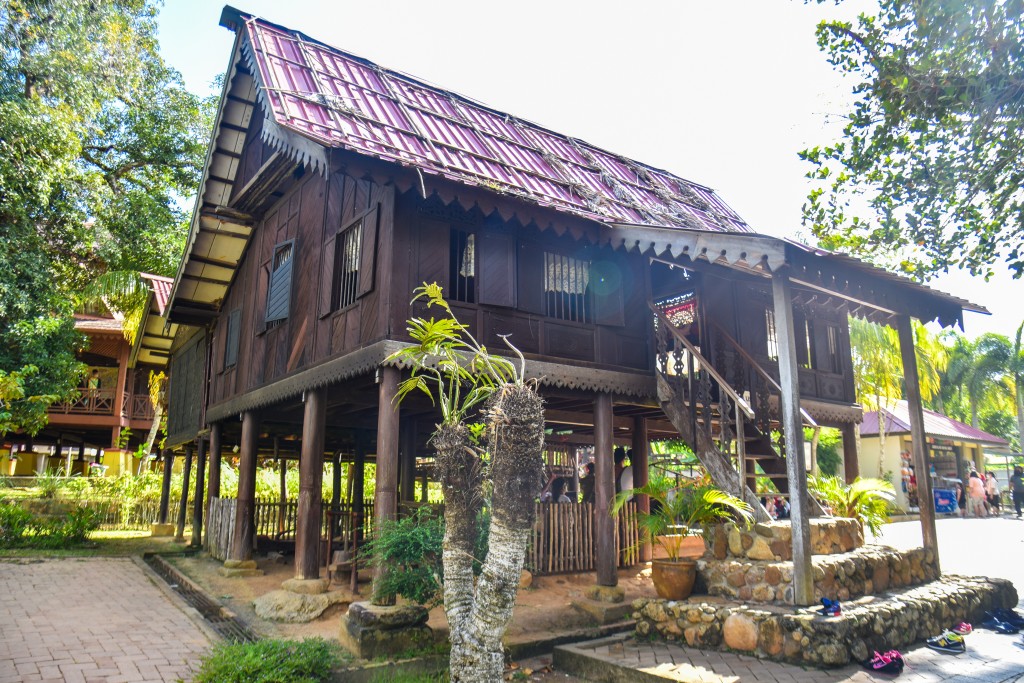Lessons to be learnt in tradition
Basing sustainable homes on traditional Malay architecture
By Yanika Liew
As Malaysia aims for more sustainable housing, architects and researchers find merit in looking to the past for a better understanding of what these houses could be. Resilient communities are founded on environmental to social sustainability and traditional Malay architecture can provide wisdom to be considered.
“Natural ventilation in the traditional Malay house is promoted through various features,” Veritas principal and director Azril Amir Jaafar said.
When it comes to the site layout, he pointed out that the design of the house would always take into consideration its natural surroundings.
“The vegetation surrounding the house and topography features are part of the overall design that provide comfortable microclimate conditions that promote cross ventilation and lower overall ambient temperature,” he said.
Most of these houses face the eastern and western direction, with their longer facades facing the north and south orientation, while the large overhang at the entrance verandah area would provide sufficient shading to the house. Azril noted that the orientation also allowed the longer facades to feel the south-westerly and north-easterly wind.
“The interior spaces are generally open and windows are directly opposite each other mainly on the north and south façade to promote cross ventilation,” he said.
Natural ventilation occurs beyond a two-dimensional scale, it is also three-dimensional where the houses are elevated, allowing the wind to pass by underneath the floor and infiltrate through the floorboard gaps.
“This provides underfloor cooling which is termed displacement ventilation in modern terminology. This is proven to be the most efficient ventilation system due to the stack effect phenomenon where the cool air comes from the lower level and as the air becomes hotter it naturally rises, thus naturally creating a constant flow of air movement without forced mechanical intervention,” Azril said.
On natural light control, the emphasis is on the non-direct cool light, either coming from the north or south facades, diffused from the shaded verandah or through the gaps between wall planks. Other sources of natural light are bounced lights at high-level wall openings.
He noted that in traditional Malay homes, screens or articulated lattice patterns are always installed on the windows to control excessive glare from the strong sunlight.
Importance of spatial layout
Socially sustainable homes form more resilient families, building better neighbourhoods and communities from the bottom up. When it comes to low-income households, these considerations are rarely taken into account.
“We found in our research that the traditional Malay houses display shallow layout spatial planning, which has led to better control and safety for the unit dwellers. On the other hand, the general layout of low-income housing displays a deep planning spatial layout, which is crowded, inconvenient, and less flexible to the daily activity carried out by the homeowners. This has been the major cause of physical renovation in the low-income households,” Universiti Teknologi Malaysia at Architecture department, Faculty of Built Environment & Surveying senior lecturer Dr Sharifah Salwa Syed Mahdzar said.
The humanistic basic need of a home is a sense of control, which according to Sharifah, can be achieved through better visibility and awareness in highly integrated areas. These areas can be identified in the circulation path of the household.
“Traditional Malay houses have shown a good quality layout of spatial configuration where negotiation of space between the host and visitors is clearly defined in the circulation pattern, somehow [reflecting] the cultural norm practice,” Sharifah said.
Her research utilised stationary activity mapping which collected social data by conducting a direct observation survey on the daily routine of the household owners, and space syntax analysis, which would collect the spatial syntactical data using computer simulation software.
“Through space syntax analysis] we simulate the pattern of human movement, so it relates to human activities and behaviour,” she said.
As issues on low-income housing comfort are still being debated to this day, Sharifah noted that there has not been more interest in focusing on spatial layouts when designing a home.
She noted that the wisdom of traditional Malay architecture utilised connections of the wood rather than using nails, allowing old houses to be assembled and disassembled easily. It was the way the homes were constructed that allowed villagers to move about during flooding season.
“Using this visibility graph analysis (VGA) via space syntax methodology we can recognise there are special configurations that allow a certain control and allow a certain negotiation between the host and the visitors,” Sharifah said.
With many low-income homes designed to be small and cramped, she noted that owners take matters into their own hands and do their renovations. Even in slum areas, they hack partitions to open up the area.
Space and privacy
We need to give space, and find a configuration which is comfortable to create an ideal home, Sharifah said.
She pointed to the importance of having separate spaces, allowing people to move between each space without infringing on the family’s privacy. The women in the family are protected in the heart of the home, with other social spaces allocated for non-family members.
“Malay girls, they are all bertudung (covered), you have to compromise your being to be seen by the visitors, sometimes people don’t want that, so you don’t have that kind of privacy, so two entrances, I would say, is very important,” Sharifah illustrated.
“I think for many of these low-income or mixed houses development, these kinds of layout have not really been given consideration is all I would say,” she added.
In many of the low-cost income homes, there is only one entrance. Even in flats and apartments, Sharifah noted that the two-entrance concept can also take place. She pointed to the dual key concept, which separated a unit into two spaces.
With incremental infill, residents can bring something of their own to build. The owner is given the opportunity to design, to be the architect of their own home, in accordance with the layout that they are comfortable with.
“The spatial layout differs from the modern urban houses in terms of hierarchy of spaces. In the traditional houses, the transitional experience is more apparent when entering the houses,” Azril said.
According to Azril, the experience of living in a traditional Malay home began before entering the house; there would be pots to clean the hands and feet before entering. The experience would continue to the verandah as the second transitional space before entering into other spaces in the house. The privacy of the interior spaces would sometimes be separated by the split levels of the interiors or curtains.
“The modern urban houses the experience of entering the interior of the house through the layering of spaces generally more abrupt and the level of privacy generally defined by the maze of internal walls,” he said.
“There are benefits in learning and understanding the reasons for the practices and design of traditional architecture especially in dealing with the climate. However, adaptation is required to suit modern lifestyle and priorities,” Azril said.
He noted that while the preservation of original craftsmanship intricacies was important to heritage and the perspective of artisans, the main objectives, spirit and properties of the traditional designs, not solely forms, are more important to adopt.
The adoption should be carried out in a manner to innovate and improvise further by exploring new materials and technology related to contemporary building forms and scales, he said.
“Bring research into the design, get the developer to acknowledge the importance of research and design. Because at the end of the day, it benefits not just them but the community at large,” Sharifah added.
Source: StarProperty.my



















POST YOUR COMMENTS